Analysis: the Ryanair-Wizz showdown in depth
It’s that time of year again: earnings season. As such, Ryanair and Wizz Air both have disclosed their financial results for the previous quarter. While the Irish group registered a profit after taxes of EUR170 million, its Hungarian counterpart has posted a loss of EUR452.5 million.
Naturally, as one would expect, both airlines will defend their current positions and their posted numbers. But as Ryanair expands into Eastern Europe — and Wizz goes Westwards –, one might wonder who is, so far, the best positioned out of the two.
With the help of the companies’ financial statements and with Cirium’s Diio Mi application, a clearer picture of the actual situation of the two competitors can definitely be seen.
Ryanair and Wizz before 2020
While Ryanair’s story is well-known around the world for popularizing the ultra low-cost model in Europe and taking it a step further in it than its peers, Wizz might not be as popular as the former.
In fact, Wizz Air is a powerhouse in Central-Eastern Europe, connecting those markets — especially concerning the VFR demand, passengers Visiting Friends and Relatives — to several countries, especially in Western Europe. As of the previous quarter, Wizz claimed the market leadership in eight of its 16 «core» countries.

Back in 2019, Wizz was just starting its towards Western Europe. Westward of the CEE countries, its only bases were London/Luton and Vienna.
As such, their top 25 airports in terms of seat capacity in the third quarter of 2019, according to Cirium, were the ones you see below.

Naturally, the Western European bases mostly concentrated in being connected to Eastern Europe. For instance, here’s the network from Brussels/Charleroi in that same quarter:
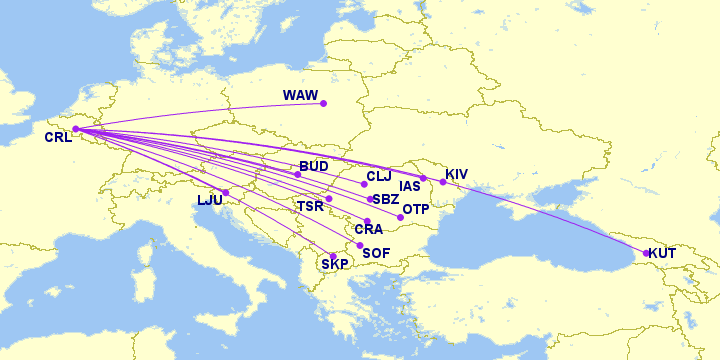
By the same token, the Eastern European bases were mostly focused in serving the VFR demand to the West. Take Timișoara, Romania’s third-largest urban center, in that quarter of 2019.
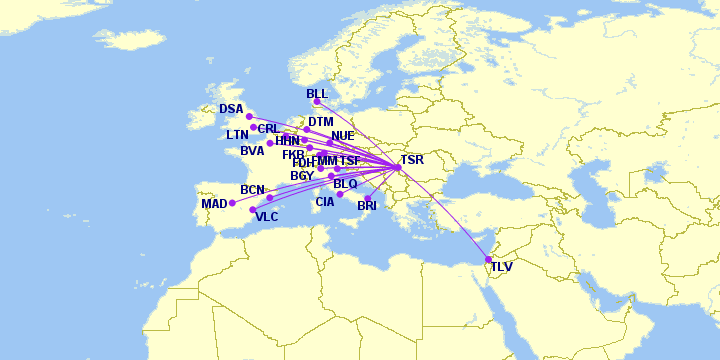
All in all, this was the situation.

At the same time, Ryanair’s top 25 seat capacity markets would only go as far Eastward as Krakow.

Its presence growth in Eastern Europe, however, did exist; comparing the third quarter of 2019 to the same quarter in 2015, its growth in that part of the continent was higher than Wizz’s, but Wizz remained, with a large margin, the leader in capacity there. They grew, proportionally, almost as much as Ryanair.
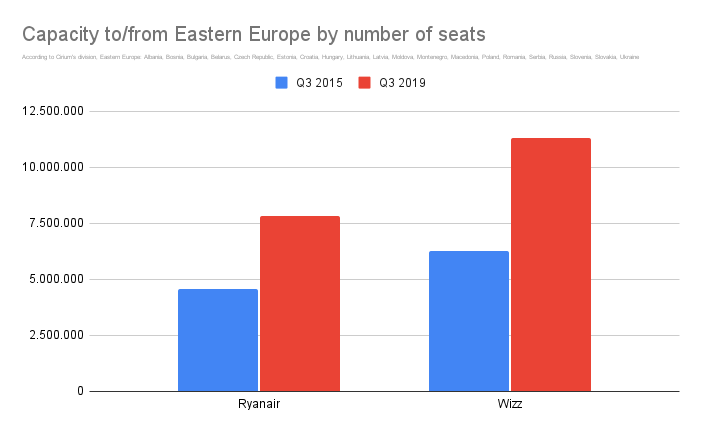
The first fight: Vienna
So as one started to slowly grow into each other’s «home», the battle started to be set. As Niki went bust, opening a void in the leisure Austrian market, both Wizz and Ryanair tried to take up their share there.
Vienna was the first huge showdown between the two, with talks about overcapacity from all sides. Using its Laudamotion business unit, Ryanair opted to lose money in that operation — as Michael O’Leary admitted in their last earnings call before COVID — in order to invest in a market they were weak, up until then.

«The only reason that Laudamotion is losing money is because the fares are significantly lower than they had previously been or than we had budgeted», he said at the call. But speaking of Lauda’s growth and other carriers leaving the market, he claimed «we look at Lauda as being a structural investment in a very significant presence in the Vienna market».
From the other side of the competition, Wizz’s CEO József Váradi claimed, in their earnings call that quarter, that «Wizz Air is a structural winner in Vienna. Actually, we are the only airline not losing money in Vienna.»
«The reason we are not losing [money]», he said, «is that we’re seeing that we have a proposition to the market which excels anyone else. We are flying an all A321 fleet. I mean, the A321 is the most economically efficient aircraft type today versus a very mixed old fleet competition […] As a result, with a significant margin, we are the lowest cost producer in the market in Vienna. […] While all others are losing, we are still breaking even on financial performance.»
Notice the key factor that he defended was benefitting Wizz versus both Lauda/Ryanair and the other competitors was their Airbus A321 fleet. The airline thought that this aircraft, by carrying 230 passengers, could deliver lower unit costs than the A320 and the 737-800, fundamentally beating Ryanair.
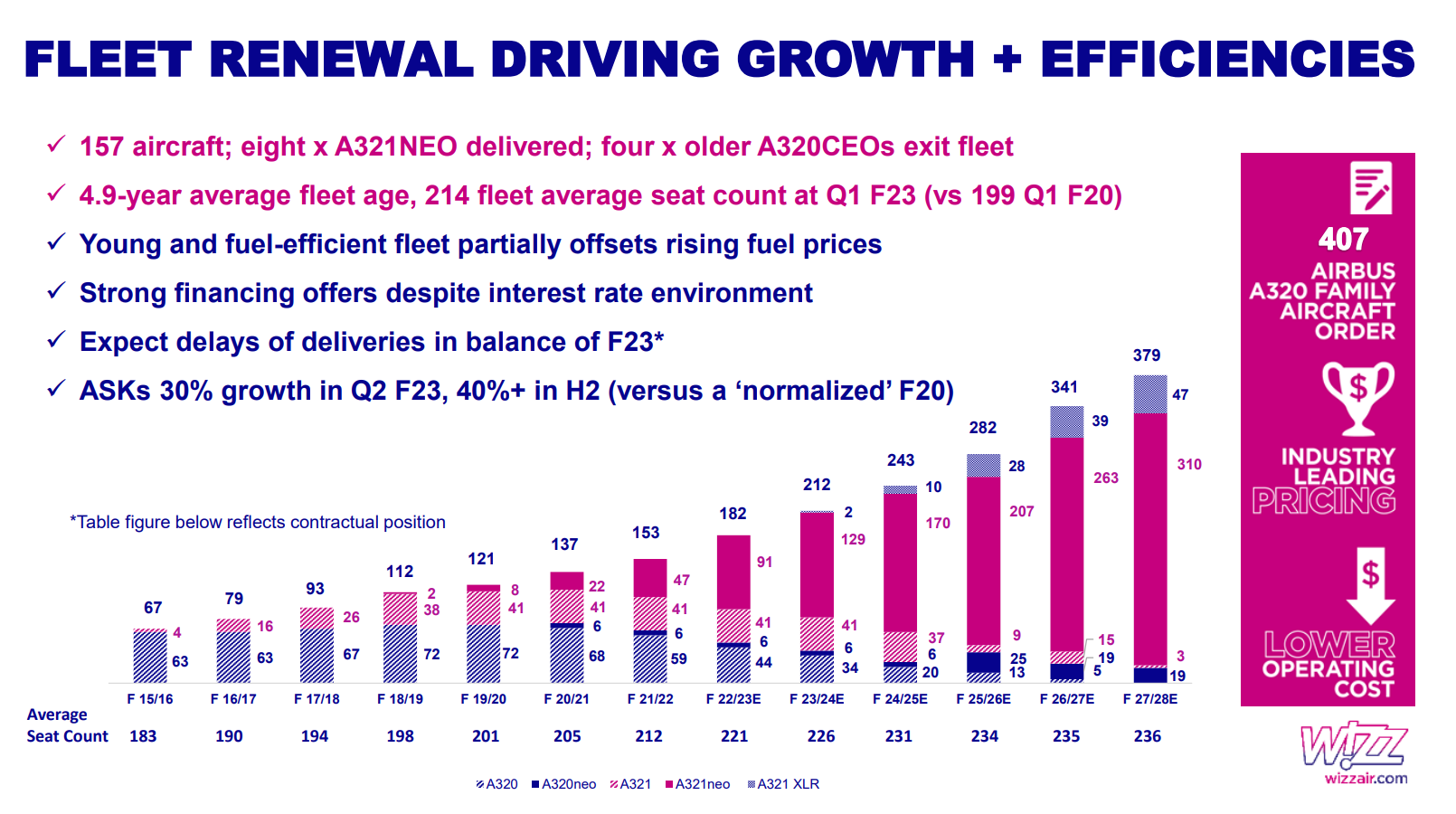
Ryanair’s only airplanes, back then, were the Boeing 737-800, carrying 189 passengers, and Lauda’s Airbus A320s, which could carry 180 passengers.
So this was already a focus of Wizz Air; the transition towards an A321 fleet instead of a fleet of A320s, where volumes brought unit costs down.
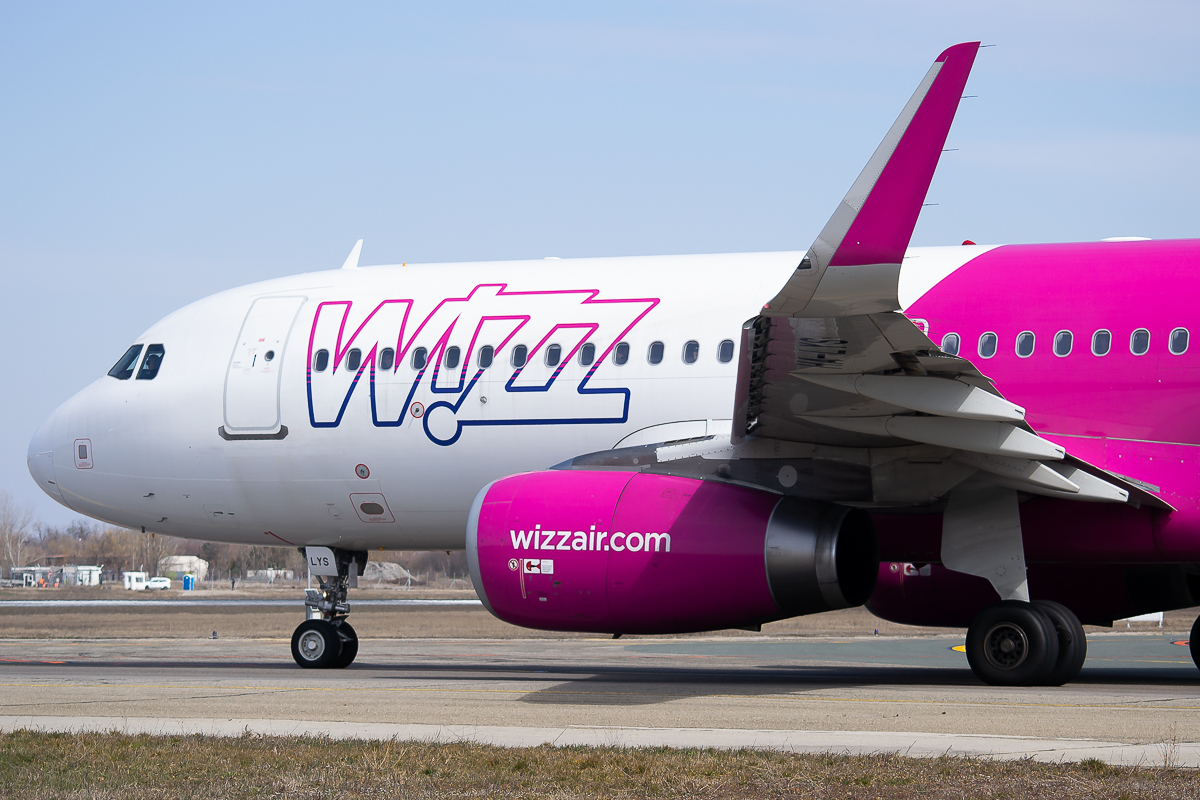
Other developements before the pandemic
At the same time, in 2019, Ryanair «revived» its Buzz brand, using a Polish AOC to benefit from lower labour taxes, in the same line as they did with Malta Air in other markets.
And as the attrition began to gain momentum, the claims from both sides on who had the lowest unit cost started to pick up in a similar proportion, too.
Naturally Ryanair didn’t believe that Wizz’s was a winning strategy — or at least it didn’t publicly admit it. «I know […] our unit costs are 24% lower on a per-passenger basis than Wizz who claim to have lower cost than us, but then they’re clearly mathematically challenged,» said O’Leary in that same earnings call.
«And we will continue to use that cost advantage to roll out the successful low fares formula across Europe where nobody else is able to compete with us», added the Irishman.
The fight was growing — and effectively happening — organically, until the pandemic happened.
…until COVID changes the playing field
Whoever you think is delivering the lowest unit cost, an undeniable fact is that both Ryanair and Wizz entered the pandemic with plenty of cash in hand. With this, (oversimplifications apart, of course management had to work hard to make the airline survive) they were very well-positioned for the difficult years ahead.
Before we get into their strategies during COVID, here’s a fundamental difference between the two that began in 2019; the fleet growth plans.
Wizz received its first A321neo in March 2019. With that, the A321 transition effect was intensified, since the neo burns about 20% less fuel than the previous generation, besides carrying 239 seats instead of the usual 230.
This first delivery happened in the same month the 737 MAX was grounded. Now Ryanair was hoping to receive some MAXes starting from Summer 2019, but of course that didn’t happen. Naturally, then, the only tools they had was sticking to their good old 737-800s.
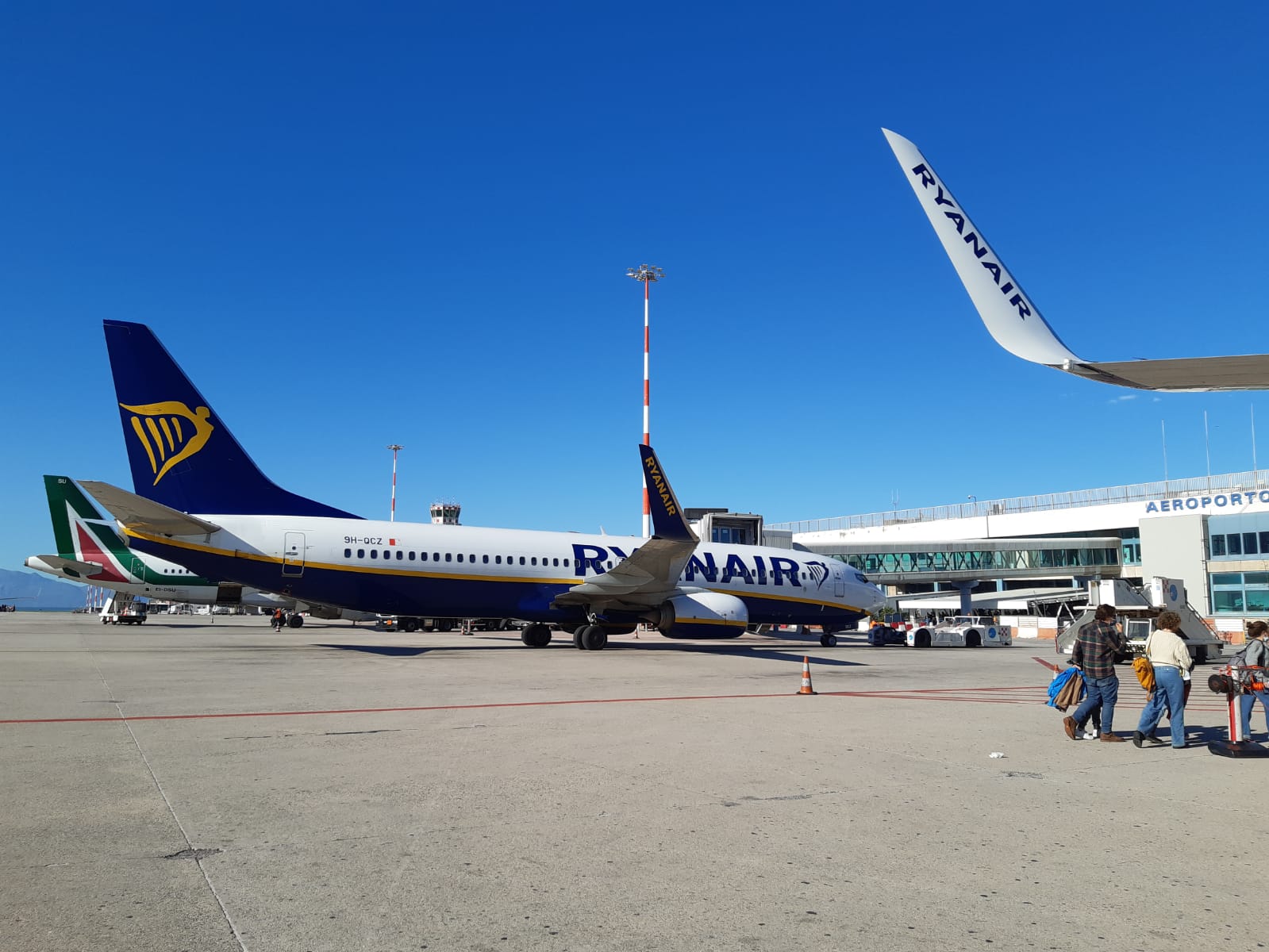
Once the reopening of Europe for travel started, ultra low-cost carriers (ULCCs) were to lead the recovery, given their leaner structure, the greater appetite for short-haul vacationing and the low fares these companies could offer to customers. And naturally, both Ryanair and Wizz were ready to snatch these opportunities.
And Wizz really made up for the opportunity. If previously only Luton was an operating base for the Hungarian low-cost in Western Europe, in the fiscal year ended in March 31st, 2021, they had opened ten new bases in the Western countries.
The bases were (not in chronological order) Cardiff, Doncaster and London Gatwick in the UK; Dortmund in Germany; Oslo Gardermoen in Norway; and, the ones that called the most attention, Bari, Catania, Milan Malpensa, Palermo and Rome Fiumicino in Italy. During the following year, Naples and Venice were also opened.
In a surprisingly humble fashion, Wizz claimed, in their earnings announcement for their 2021 fiscal year, that ”we have also strengthened historic positions in select markets in the West, notably in the UK and Italy”, adding that ”the UK and Italy are markets where we have been operating with a strong brand and product for more than 15 years and where COVID-19 has redrawn the competitive landscape allowing for a disproportionate level of growth”.
That’s true, but there’s more to that than meets the eye. First, yes, Italy and the UK had been a strong market for them, but this doesn’t mean that the passenger that needed to go from, say, Catania to Cluj, is the same that would like to go from Catania to Heraklion or Milan.
In other words, by starting an aggressive growth campaign in Italy, they would start to open themselves to a new customer and a new market; this time, facing a very dire competition.
The Italian market
Indeed as Alitalia went bust a huge capacity void opened. Crucially, in 2020, as Alitalia limbed before being given its mercy shot, the gap from them to Ryanair (already the largest carrier in Italy) only grew as the Italian airline had to save as much cash as possible.
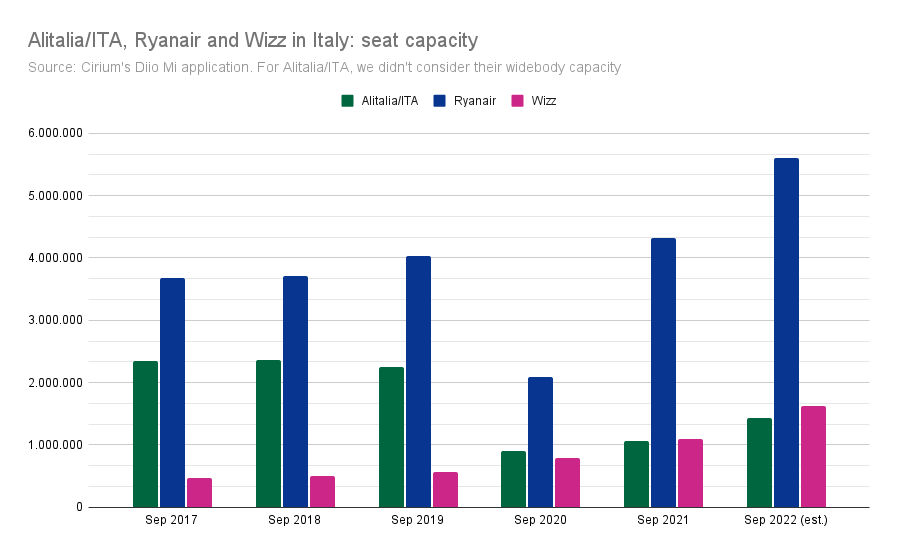
With that, a great opportunity appeared for the low-cost carriers, and there went Wizz adding base after base in Italy.
Now Wizz was already known in the market for its trial and error approach in network planning, and COVID only amplified that.
From its new Palermo base, for instance, comparing September 2021 to the same month in 2022, four of the seven routes haven’t survived their first year: Basel, Pisa, Treviso and Verona.
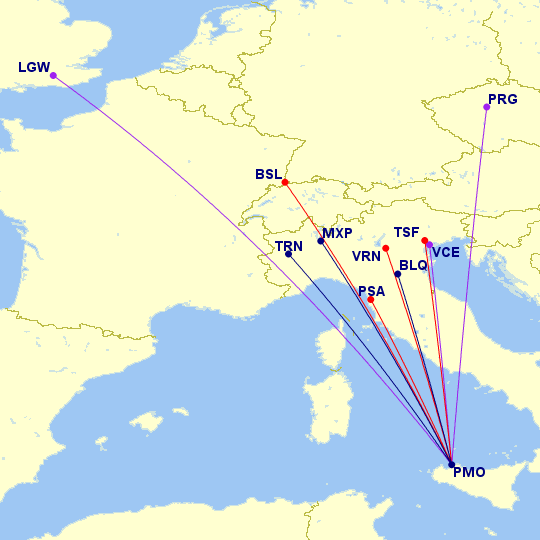
This low rate of «route survival» is a stark contrast to the incumbent airline in the local, Ryanair; comparing September 2022 to September 2021, five destinations from Palermo were slashed, but five were added and 35 have remained.
The same pattern, albeit in a smaller proportion, can be observed from a much larger investment in Italy; Wizz Air’s base in Milan/Malpensa Airport. While, there, Ryanair only canceled one route — to Kaunas, Lithuania –, Wizz has canceled six (two to Ukranian cities).
But this high route «rotation» also has its merits, so much so that the Hungarian airline has also opened eight new routes from Malpensa, while keeping other 28.
It’s important to remember that, with Alitalia’s demise, Wizz received some slots at the highly-central (thus more expensive) Milan/Linate Airport.
While this would go against the ULCC logic of going to an expensive airport, you could also interpret this movement as an opportunistic gesture of Wizz Air to snatch more market share in the highly-coveted Milan area, to get its word on the street.
«I wouldn’t go [to Linate] even if it was free», said O’Leary back in 2009. «An Alitalia strike and everything gets blocked». Ryanair then stuck to its word, even though the Irish carrier had also received Alitalia slots in 2021.
But Ryanair won’t leave Wizz without a fight
O’Leary, renowned for its loudmouth attitude, started seeing things get better as restrictions started to be lifted. This is especially because, in the run-up to this high season, the Irish airline started to receive its first Boeing 737 MAXes after the grounding. This Summer, it said in its earnings report, it is operating 73 units of the type.
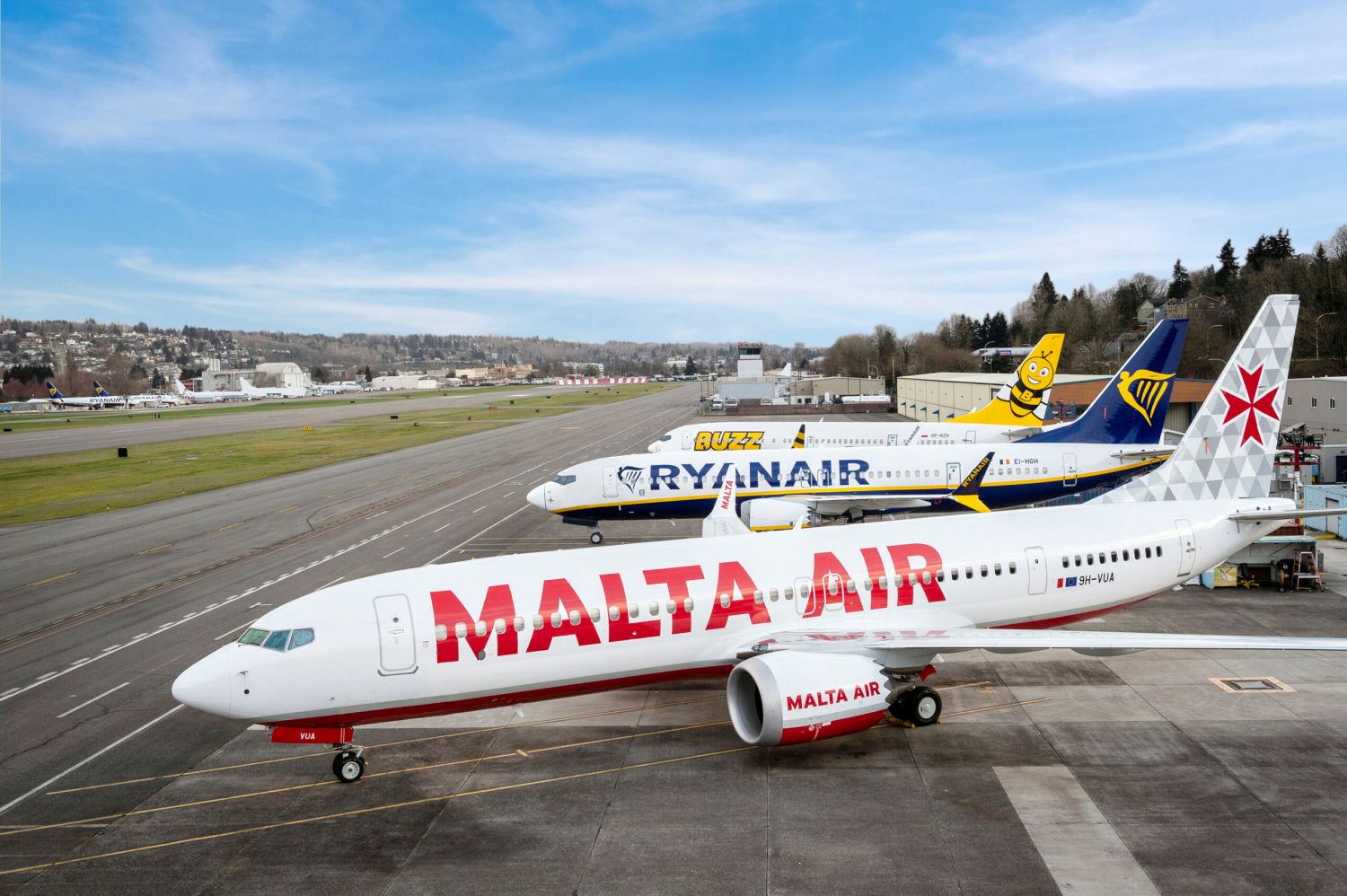
The aircraft Ryanair is taking delivery of, the MAX 8200 series, has the same fuselage size of the -800s the airline has, but with 197 seats instead of 189. This, allied to the new engine, brings the airline to rename it the «Gamechanger» instead of the MAX.
While one would have thought that, given the ongoing attack from Wizz in Western Europe, that MAXes would be fully deployed in Italy and other critical markets, apparently, they are quite evenly distributed across the group’s network.
Only 22 of Ryanair’s 73 MAXes are allocated in Italy, while at Wizz, of their 61 next-gen aircraft, it has practically the same number, 21, based in Italy.
But we have to put this in perspective. Ryanair has over 90 aircraft based in Italy spread across 17 bases — so that 22 aircraft is not as relevant, while all of Wizz Air’s Italy-based aircraft are next-gen. This is very likely not a coincidence. It is likely that Wizz is putting its best, lowest-cost assets up for this fight with Ryanair.

And this is not for nothing. After all, as much as the void after Alitalia does exist, Ryanair had virtually become the incumbent carrier in the Italian market long before Alitalia left. So not only the airline has the lowest cost structure, it also had the preference of the Italian consumer.
At the same time, this «attack defensively» approach from Wizz Air might be sort of justified. Because when you look into the Italian markets that Wizz has invested in, you can say that they didn’t try to avoid Ryanair’s presence at all costs. In other words, there is some overlap. Let’s take the example of Rome.
Fiumicino becomes the home of the low-costs
Who would have thought. Fiumicino has become a low-cost carrier haven and the pandemic has only amplified this trend (this would be a topic for another day, though).

One of Michael O’Leary’s major provocations against Wizz is that they actively avoid Ryanair competition, but this is not necessarily true, at least in Italy. If we take Rome/Fiumicino we can take a better look at this pattern.
Below is Wizz Air’s network from Rome/Fiumicino for August 2022, according to Cirium’s Diio Mi application. While the routes in blue do not face direct competition with Ryanair, the ones in red do — and the routes in orange have competition with Ryanair via Rome/Ciampino Airport, which is not direct competition, but does influence the market preferences.
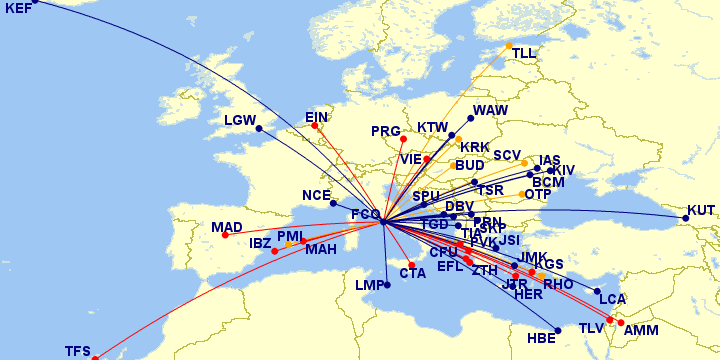
All in all, of Wizz’s 45 routes from Fiumicino, 16 face direct competition with Ryanair and a further seven see competition with Ryanair if you also consider Rome/Ciampino Airport.
This is a stark contrast with the pre-pandemic days. Back in August 2019, Wizz Air had only five destinations from Fiumicino — Budapest, Krakow, Kutaisi, Vienna and Warsaw, with only the first two counting with Ryanair competition, although they did so via Ciampino.
The fight goes onto the previous quarter
Back to our first paragraph, Ryanair posted a profit after taxes of EUR170 million, while Wizz posted a loss of EUR452.5 million. While both business models have definitely proven to be very succesful pre-COVID, this might show the position of the two carriers leaving the pandemic behind.
What ultimately ruined Wizz Air’s numbers was the price of fuel and its hedging policy during COVID. While Ryanair was better hedged — its fuel expenses raised 560% versus the same quarter in 2021, parallel to a 328% increase in departures — Wizz was not, with fuel expenses raising 700% versus a 190.7% increase in departures.
This is naturally reflected in the unit costs and revenues of each airline, as shown below.
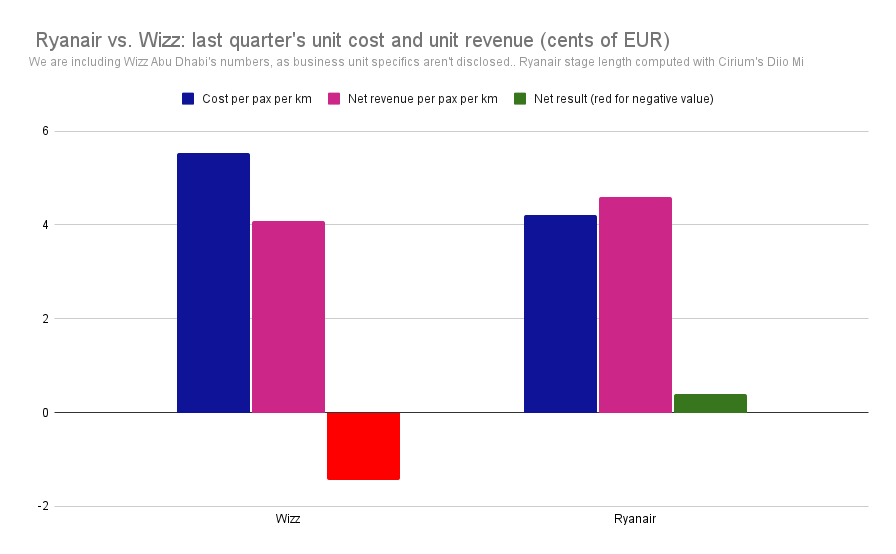
This effectively meant that, for every passenger that boarded Wizz during the previous quarter, the airline had a net loss of EUR23.35 over a net revenue per passenger of EUR66.40.
But Wizz did not back off from its expansion plans, instead deeming it as a short-term shock and starting to hedge for the coming seasons.
In an article by the Financial Times’ Philip Georgiadis back in July 2021, O’Leary challenged Wizz’s aggressive approach into its new markets, saying «the real difficulty for the Wizz model is that they can’t explain how the hell you can expand dramatically in Western Europe when Ryanair is already there.”
That may be true, but in their defense, he says that their current expansion is measured and opportunistic. «I don’t think we are trying to make this a broad-based Western European airline», said Jószef Váradi in Wizz Air’s investors call last week.
«We are pursuing very select market opportunities in Western Europe, and we will remain focused on these three markets [editor’s note: the UK, Italy and Asia] going forward to follow through market opportunities with capacity increase there.»
To put it simply, Wizz sees the new markets as a calculated risk, where it knows it will lose money at the start, but ultimately believes it can build, using its proven business model and its high levels of cash, a loyal (and thus profitable) customer base in the long-term.
It’s likely not a coincidence that, last year, the airline led by Váradi approached easyJet in a takeover bid. According to Cirium, in the current quarter the airline is the largest in the UK and the second-largest in Italy. More critically, Wizz would have expanded its slots in constrained airports, being able to «buy» market share in these focus markets. The deal was ultimately ditched by easyJet’s board.
Still, Wizz does not rule out being an active player in any further consolidations, said Váradi in the last earnings call: «[Winter’s] going to be a pressing environment on a number of airlines having limited liquidity, not having the cost in place to compete and we might be seeing some emerging opportunities as a result. […] Should those market opportunities arise, we would be acting on those market opportunities.»
In the meantime, Wizz Air’s gonna keep the pressure on Ryanair, and as more next-gen aircraft keep coming to the fleets of both, it is likely that the going will continue to be tough.

/https://aviacionlinecdn.eleco.com.ar/media/2022/07/wizz-ryanair.png)
Para comentar, debés estar registradoPor favor, iniciá sesión